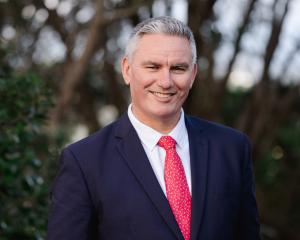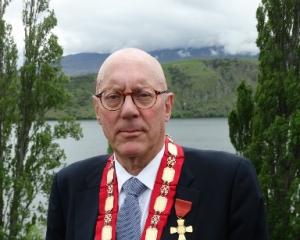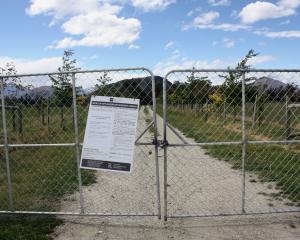
Last September, the council decided not to pursue an option to seek resource consents from the Central Otago District Council to store and discharge up to 2000cu m of sludge each year on a 3500ha Ardgour Rd property "based on the strong feeling of the Tarras community in general".
The application attracted 74 submissions, 68 of which were opposed to the project.
However, the council's infrastructure services committee will discuss on Tuesday an application by two landowners near Luggate who want to apply Project Pure sewage sludge to their land.
In August, the utilities committee gave approval to investigate, from existing budgets, beneficial uses of sludge, and in September, the council was approached by the landowners to pursue the land application option.
Council solid waste manager Stefan Borowy and strategic project manager Martin O'Malley had chosen the application as the "recommended option".
Mr Borowy told the Otago Daily Times yesterday he was "not in a position" to disclose the names of the applicants yet, but said the area of land was more than 600ha.
"That's what's available, but it wouldn't be using all of that land.
"We want to get a recommendation from the infrastructure services committee ... before we release [the landowners' names].
"Also, obviously, we're negotiating with a number of landowners contractual agreements with that."
Mr Borowy said the council had "learned a lot of lessons" from the failed Tarras application - primarily "maybe we didn't consult widely enough in terms of that application".
"Obviously, [this time] we would carry out a full consultation process ... we'd go out to consult with the public fully with this prior to even [lodging] a resource consent application."
In their report to the committee, Mr Borowy and Mr O'Malley said the council had evaluated several options for the sludge, one of two by-products of a mechanical wastewater-treatment facility.
About 1000 tonnes of sludge from Project Pure is being disposed of in the Victoria Flats landfill annually at a cost of $25 per tonne for transport and $188.70 per tonne for disposal.
The costs were expected to increase to between $231,700 and $253,700 a year from January 2013.
The council had been approached by several parties, including some with "new alternative technology ideas".
"These are proposed solutions that consist of chemical, mechanical or organic methods of getting rid of the material that require very little land area and are all generally very new and unproven. Therefore, while they appear very attractive, they do not come with a track record," the report said.
The application from the landowners had been chosen as the recommended option because it had "significant" benefits for the council and the farmer.
"This methodology requires a holding area in the form of a pad with a leachate collection system ... with sufficient capacity to hold at least two years' worth of material.
"Once the material has been stored for one year, the farmer spreads the biosolid on an area of land, which is then ploughed immediately.
"Once the operation has been set up, the operational costs are minimal compared with landfill disposal and all other options."
The costs associated with the option were $455,700, to be funded from the capital budget in the 2011-12 financial year and ongoing monitoring expenditure of $36,460 per annum.
The risks associated with the solution were based around timing and costs of obtaining the resource consent for the storage area, the report said.
It was likely, if approved by the committee, the process would be notified and would involve public hearings.
"It is likely that this process will take most of the financial year to complete and will require $188,700 operating costs to dispose of the sludge to landfill."
The alternative solutions included "ag bag composting", which would require a covered concrete pad with a leachate collection and storage system.
The sludge would be mixed with shredded green waste and fed into a high-density polyethylene bag. After six weeks, the material would be screened and the fine compost material used by the Parks and Reserves team in gardens and reserves around the district.
Central Wormworx had approached the council looking to construct a worm farm to deal with the sludge, which would require the construction of a heated pad with waste material put into windrows and turned every three to seven days for up to 40 days.
Worms would convert the organic material into wormcasts, which could be broken down into readily available nutrients.
Advetec (NZ) Limited had proposed installing a twin chamber unit at the Project Pure site, where the sludge would be introduced to a blend of plant matter to "stimulate the indigenous bacteria and increase metabolic processes and respiration to eliminate the material".
Advetec was manufacturing a trial unit, which would arrive at the Project Pure site in April. The trial would be conducted at Advetec's expense.
Despite the recommendation, the report said the ag-bag option and "potentially" the Advetec solution could be revisited if the land application resource consent was unsuccessful.












